Details continue to emerge about the brutal force Iranian police and security agents used against protesters in Shiraz and across Fars province during the mid-November protests against the steep increase in gas prices.
Almost immediately after Iranians across the country took to the streets, authorities blocked the internet across Iran, making it extremely difficult for Iranians to access news from outside the country, or for the rest of the world to find out what was happening in Iran. Almost every day since the block has been lifted, people have shared stories of the violent suppression of the protests and the tally of the those killed, injured or arrested keeps rising.
The most shocking story to come out after the near-total news blackout was the use of tanks and heavy machine guns to subdue protesters in Mahshahr, a port city in the southwestern province of Khuzestan. The Iranian government has yet to officially announce figures regarding the November protests, but according to confidential documents that IranWire received from a Khuzestani official in mid-December, at least 148 people, protesters and bystanders were gunned down in Mahshahr and towns around it [Persian link].
By no means, however, was Mahshahr an exceptional case. The city of Sadra in Fars province, near the provincial capital of Shiraz, was also the site of brutal violence and bloodshed.
On Saturday, November 16, and Sunday, November 17, widespread protests took place in Shiraz and its satellite towns. According to Iranian security officials, Shiraz protests ranked number one in terms of the “range of locations and of the blocking of streets” by protesters [Persian link]. As in many other places, protests in this area started with people chanting slogans against rising prices, but soon the chants turned more political, with people shouting out anti-government and anti-regime slogans. A number of government properties and banks were set on fire and both the government and protesters have accused one other of being responsible for the destruction. It has not been possible to verify either side’s claims because the normal process of news gathering was interrupted by the internet shutdown and a general breakdown of communication.
There is little doubt, however, that, in subduing protests in Shiraz and the surrounding towns, security forces followed a doctrine that, as an expert in “urban warfare” told the official Islamic Republic News Agency (IRNA) on November 23, directly endorses the use of maximum force [Persian link] to ensure the protests were quashed as soon as possible. The result in the small city of Sadra, for example, was that at least 87 people were killed.
Although the full facts about what happened are still not available, IranWire has tried to draw as clear a picture as possible, presenting eyewitness accounts of what happened during those two days in November in parts of Shiraz and the surrounding towns, as well as in other locations.
Sadra City: People Threw Stones. The Officers Killed Them
“The protesters had gathered in front of the paramilitary Basij building. They were throwing stones and chanting. The Basijis had gone to the rooftop. There were not many of them up there. Some were children, a few were young men and [there was] an older man who seemed to be the base commander. The children, who were holding shields, were small and very young but they had been given rifles as well. Fourteen of the protesters, including two women, climbed the wall and entered the Basij building. We heard a barrage of shooting after which the gates to the building opened, an anti-riot vehicle came out of the yard and stopped in front of the crowd. At the same time a helicopter landed on the roof of the building and unloaded ammunition and few sharpshooters. The man in the anti-riot vehicle threatened people and told them in a foul language to disperse. People started booing him and chanting and the armed Basijis started shooting at the people directly. Many of them fell to the ground right before my eyes. The sharpshooters aimed at people’s heads and hearts.”
This is a succinct account of the bloody afternoon of Saturday, November 16, in the city of Sadra in Fars province, as told by Razieh (an alias), a woman who witnessed the protests. Sadra, 15 kilometers from the provincial capital of Shiraz and with a population of over 150,000, is a new city and was founded in 1992. As a result, the population is made up of migrants from different parts of the country. With three university campuses, Sadra has all the characteristics of a university town, including students from other parts of the country and the province. A man living in the city using the alias Jahandar, believes these features of the city make it very difficult to know about the people who were killed in the protests because most probably their bodies were taken to villages and towns where they were originally from and where their families live and buried there. Consequently, he says, “you will see only a few notices for mourning ceremonies in Sadra.”
Protests in Sadra started at 10am on November 16 at Flowers (Sangi) Circle. A number of drivers almost simultaneously shut down their engines and blocked the road, and after a few minutes, a crowd gathered around them. The commander of the police station arrived and asked the drivers to clear the road. But people gathered there spoke in support of the drivers and encouraged them to remain where they were. The police returned to the station and closed its doors.
People chanting in the town of Sadra on the morning of Saturday, November 16: “Neither Gaza, nor Lebanon; my life for Iran”
According to Ahmad Reza (an alias), who was at the scene of protests before the shooting started, protests were peaceful until 3pm. “I don’t know whether the Basijis first started shooting at the people and then the people rushed the Basij base or if it was the people who first threw stones at the building,” he says. “In any case, around 3pm things quickly changed.”
Another eyewitness using the alias Mehrdad says, “Everything was calm until the Basijis started shooting at people. When the bloodshed started people were enraged and the clashes intensified. Later, on Saturday and Monday, they set fire to the bank, the Registry Office and the office of the Friday Imam — a reaction to the same carnage.”
A student going by the name of Atena had left her home in Molana Avenue at around the same time and got caught up in the protests. “At three o’clock I was going to the university,” she says. “The taxi took me to the edge of Flowers Circle but [the driver] told me that the streets were closed and we could not go any further. People had closed the streets by setting tires on fire.”
Atena got out of the taxi and started on foot toward Molana to return home when she saw a protester who had been shot. “Around 3:15 an ambulance was passing me and stopped after the driver saw a young man whose hand was in a splint and who had blood all over his head and his face,” she says. “When the nurse got out of the ambulance the young man told the nurse: ‘I am all right. Over there they have killed people. Go there.’ The young man was one of those who had been shot in front of the Basij base. Three people had been killed on the spot and he was among the several who had been injured.”
Shooting in Sadra: “They have killed eight people as of now. They shoot at the people directly. They are shooting from the rooftop”
Atena saw people throwing stones at the Basij building and the Basijis shooting at people from the rooftop. “They had fired a lot of teargas,” she says. “I went into a shop to escape the teargas. After some minutes the helicopter arrived. I could see outside from the shop’s display window. The helicopter unloaded ammunition on the roof. But I did not see anybody shooting from the helicopter. The teargas was thick and I could not go out, but when they lit a fire outside it became more tolerable. I held my wet headscarf to my face and left the shop. By now it was around 5pm.”
Amin (an alias), a shopkeeper on Molana Avenue, says in the morning everything was normal but starting at noon the situation gradually became critical, and from around 3pm it was like a warzone. “When the helicopter arrived people panicked,” Ami says. “They say that they shot at people from the helicopter but I did not see them doing that. The only thing that I can say with certainty is that the helicopter brought ammunition for the Basij base. Also, a few people jumped down from the helicopter and, as we learned later, they were the sharpshooters who aimed at the people on the street and killed many. A man was protesting in a loud voice. He had an accent, like of the Lors. Sadra’s population are mostly Lors and Qashqai Turks. A woman was sitting on the ground next to him. I saw the man get shot and when he fell the woman started crying loudly but then she fell too. I don’t know whether they died or not. They were far from us and nobody dared to get close to them.”
Atena says that when she left the shop and was trying to return home through safer backstreets her father called her on the phone. “When I had taken shelter in the shop we talked a few times and as I was leaving I called him, too,” she says. “He said that my brother had not returned home although he had closed up shop two hours earlier. I did not go back home. My father and I were separately searching for my brother until 8pm. We went to the hospitals and clinics. The sound of shooting never stopped. Around 8pm I saw with my own eyes when they set fire to the office of the Friday Imam, the Registry Office and the bank. I even saw that they brought out the Friday Imam’s black robe to the street and set it on fire.”
Sadra on the night of Saturday, November 16: The office of the town’s Friday Imam is set on fire
That night authorities took a large number of the dead and the wounded to Abu Ali Sina Hospital (also known as the Organ Transplants Hospital). According to a member of hospital’s medical staff going by the alias Anahita, most of the people brought there had been shot in the head or in the heart. “It seemed that they had intentionally shot to kill,” she says. “Most of those killed were young men, although a few women, middle-aged men and at least one child were among them as well. I say ‘at least’ because I did not see all those killed and, also, my Saturday shift ended so I cannot tell you exactly about the gender or the age of the victims. I don’t know how many of the injured died in surgery after I left or how many more they brought to the hospital after my shift was over. While I was there they sent 28 bodies to the morgue. Afterwards my colleagues told me that the number of bodies had reached 87. Of course, security agencies threatened the hospital staff that they must not talk about what they had seen.”
Mehrdad says most of the people he saw being killed were shot from the rooftop of the Basij base, although he also witnessed people in front of the gate to the building being shot. “After the gates were suddenly opened, a Basiji or a member of the Revolutionary Guards rode in an anti-riot vehicle to the front and when people ignored his warnings he shot directly at them. Three people in front were killed immediately and a number of those behind them were injured. The rest of the shootings came from the rooftop of the Basij building. After the helicopter arrived the shooting intensified. It was a horrible situation. People were unarmed and were easily shot down. Nobody had imagined that they would shoot them down like this.”
Sadra: People being shot from the rooftop of the paramilitary Basij base. A helicopter arrives with sharpshooters and ammunition for the Basijis
Atena went to the police station hoping to find out something about her brother. “The doors were closed and the lights were out. I pounded on the door a lot and shouted that my brother was missing and I needed help, but nobody opened the door or even answered me from behind the closed door. They had closed their doors and their ears, waiting for the massacre to be over so that they could restore the murderers’ security.”
Ahmad Reza says he is not quite sure that those who set the Registry Office and the bank on fire were what he called “the people,” because although the people were enraged, those who did it were very professional. “The material that they were carrying increased the volume and the intensity of the fire a hundred times,” he says. “It was not anything like gas or kerosene because it was much, much more incendiary.”
Sadra: The office of the town’s Friday Imam is set on fire for a second time. People are shot at with intensity. Protesters chant: “I will kill whoever killed my brother”
Anahita says she talked to an injured middle-aged woman who had been brought to the hospital from Abi Taleb Clinic and was in a critical condition. “She said that the taxi let her out in a street that was blocked. The shooting was intense and she did not knew what to do and how to get home. She was in this confused state when she was shot in the abdomen and fell down. They took her to the operating room and I don’t know whether she survived or not. Nobody dares to ask too many questions. They have warned us not to talk.”
Samieh (an alias), who was accompanying her mother at Abu Ali Sina Hospital on that day, says the situation at the hospital was very disorderly. Many injured people were brought in, and since the doctors were extremely busy, her mother’s surgery was postponed from Sunday morning to Monday. They told her the doctors and the medical staff were exhausted and they were not sure they would be able to find an available operating room even on Monday. “Sunday morning I talked to the ward’s head nurse,” says Samieh. “She said: ‘many people have been killed and if today is going to be like yesterday it is not clear whether the surgery can be done tomorrow or not.’ I played a simpleton and told her, ‘a hospital this big should not grind to a halt [just because it is dealing] with a few wounded. You have more than 200 doctors here.’ She angrily replied: ‘many people have been killed! No hospital can tend to more than 80 killed and twice that number injured. Go and pray that your mother will be operated on and stop taunting us.’”
Razieh, who took part in demonstrations for the whole day on Saturday, tells IranWire that even before 3pm sporadic shots could be heard in Sadra, although she said this might have been authorities testing their guns because as far as she could tell nobody was shot. But then things changed: “People moved toward the Basij base. Around 14 protesters, including two women who looked like university students, climbed the walls of the Basij building. We heard a lot of shots and none of the 14 came out of the building. I have no idea whatsoever whether they were killed, injured or what.”
Razieh again described what she witnessed after the relative calm, including the anti-riot vehicle, the helicopter landing on the roof and unloading sharpshooters and ammunition. When the official in the anti-riot vehicle began threatening people, the crowd, she says, “started booing him and chanting slogans and the armed Basijis started shooting directly at the people. Many of them fell to the ground right before my eyes. The sharpshooters only aimed at people’s heads and hearts. It was horrible. Many people fled.”
Ahmad Reza says he saw a little boy in a school uniform who was perhaps on his way home, or perhaps he had come close to the site of the protest out of curiosity. After the shooting started, the boy cowered on the ground near the curb. “Later I learned from the news that his name was Mohammad Dastankhah and he was shot in the heart by the sharpshooters,” Ahmad Reza says. “This child and another one who was also wearing school uniform cowered on the ground and they were targeted by the sharpshooters. Mohammad rolled on the ground. These guys were really murderers. They were barbarians.”
A friend of Anahita who works at a small private clinic in Sadra told her that on Saturday, around 70 wounded were brought to the clinic. “She told me that a few of the doctors were absent because the streets were blocked and this made their job much more difficult,” says Anahita. “According to her, 10 of the wounded who were in critical condition were sent to Abu Ali Sina Hospital although there was no hope that they would survive. They were hemorrhaging internally and it was not clear what could be done for them in that madhouse.”
Anahita says that, according to her friend, those accompanying the injured insisted that they should be treated in the small clinic because they were afraid that if they went to Abu Ali Sina Hospital they would be arrested after treatment. “My friend says that one of the injured needed to go to the hospital but before they got there the person who was accompanying him took him back to the clinic. He said that he had called and had been told that many security agents were stationed outside the hospital and inside the wards. The doctor became very angry and shouted at him: ‘He will die here! Which is better: in prison and alive or dead?’” According to Anahita’s friend, the injured patient eventually died because of his serious injuries and because of the delay in him reaching the hospital.
Jahandar says a number of the injured did not go to a medical center because they were afraid they would be arrested. If they had been shot with pellets they tried to get them out of their arms and legs by using a knife. “They are still scared,” he says. “Starting on Monday, November 18, security agents went to shops and clinics to get CCTV records and it was then that large-scale arrests started.”
A doctor working at the hospital on Saturday, and who asked to use the alias Dr. Ahsan, gave his perspective. “The director of the hospital, who can work and live anywhere in the world if he wanted to, must speak up. The ethics of medicine has no meaning here. He knows that from noon on Monday, November 18, through to the early morning of Tuesday more than 80 bodies were brought to the morgue under his management. Why doesn’t he speak up? Everybody here knows what has happened but there are only a few who dare to tell what they have seen. That afternoon and that night the doctors and the medical staff did all that they could. They had fired to kill and the hospital could not do more than it did. Some of the injured were not brought until it was too late and, as a result, treatment did not work. And many were dead on arrival.”
Razieh says that on Sunday morning everything was outwardly normal and traffic had resumed. Officials had cleaned up the streets and no trace of blood or burned-out tires remained. The Revolutionary Guards, all in uniform, were everywhere. At 1pm, scattered protests broke out again, and officials started using teargas. The situation continued until around 4pm. “The Guards moved in lock step from the Basij base towards the people to disperse them,” Razieh says. “I live in Sadra and know many of the Basijis in this town. While this was happening, the Basijis were inciting people to set fire to the municipality building and to Bank Saderat. A few of my friends and I who knew them could not tell the people that these individuals who were inciting them to set fires were themselves Basijis because we were afraid that they would kill them. There was nothing we could do. After Bank Saderat was destroyed they started attacking people.”
The scattered clashes on Sunday lasted until 8pm but the security forces — who on this day were mostly Revolutionary Guards and the police — mainly loaded their guns loaded with pellets. However, according to Razieh, this did not mean that nobody died in Sadra on Sunday. “In the evening, a woman shop owner in Parmida was taking her sick child to the hospital when she was shot by the Guards and died,” she says. “Those who saw the body told me that she was shot in the head. My friends say that, besides that woman, a young man was also shot by the Revolutionary Guards and died immediately.”
According to Razieh, on Sunday at least nine people were killed and not all of them were protesters. “The bodies were removed by the agents themselves,” she says. “It is really not clear how many of the families know that their loved ones have been killed. There are parents who are still hoping that their loved ones have been arrested. Some have been killed but the families still do not know. On Sunday a number of people were still out at 11pm but then the rain dispersed them. On Monday nothing was going on. The streets were so heavily guarded that nobody could do anything.”
The full list of those who were killed in Sadra have still not been made public. IranWire received a list of seven names, people who have most likely lost their lives. However, IranWire has not been able to independently verify the names and the identities of the first four.
1. Mr. Panahi (first name unknown), born in the town of Kharameh in Fars province and a former employee of the Violations Department of Sadra municipality. Panahi, is thought to be seen in one of the videos sent to IranWire, a middle-aged man wearing a brown shirt and white underwear who can be seen lying on the ground after he was shot (Persian video).
2. Hossein Heydari, from the town of Qasre Qomsheh and a member of the Kashkuli clan of the Qashqai tribe.
3. Mr. Panahi (first name unknown), a Lor resident of Sadra.
4. A high school student with the family name of Dabiri and whose father is a teacher in Sadra.
5. Mohammad Dastankhah, 15, a high school student [Persian link].
6. Majid Hashemi, 31 and a member of the Qashqai tribe, and the father of two small children.
7. Alireza Anjavi, 26, an architect. His mother was told about his death a week after he was shot dead [Persian link].
This is the first of four articles on protests in Shiraz and the surrounding areas. Read the other articles in the series:
Shiraz Protests: Security Forces Shot at Protesters as They Tried to Away
Shiraz Protests: Plainclothes Agents And Basijis Played Big Role in Crackdown
Shiraz Protests: Agents Might Have Set Banks on Fire Themselves
visit the accountability section
In this section of Iran Wire, you can contact the officials and launch your campaign for various problems




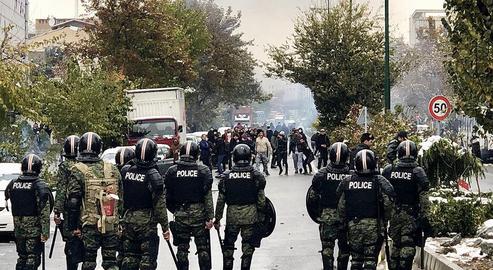
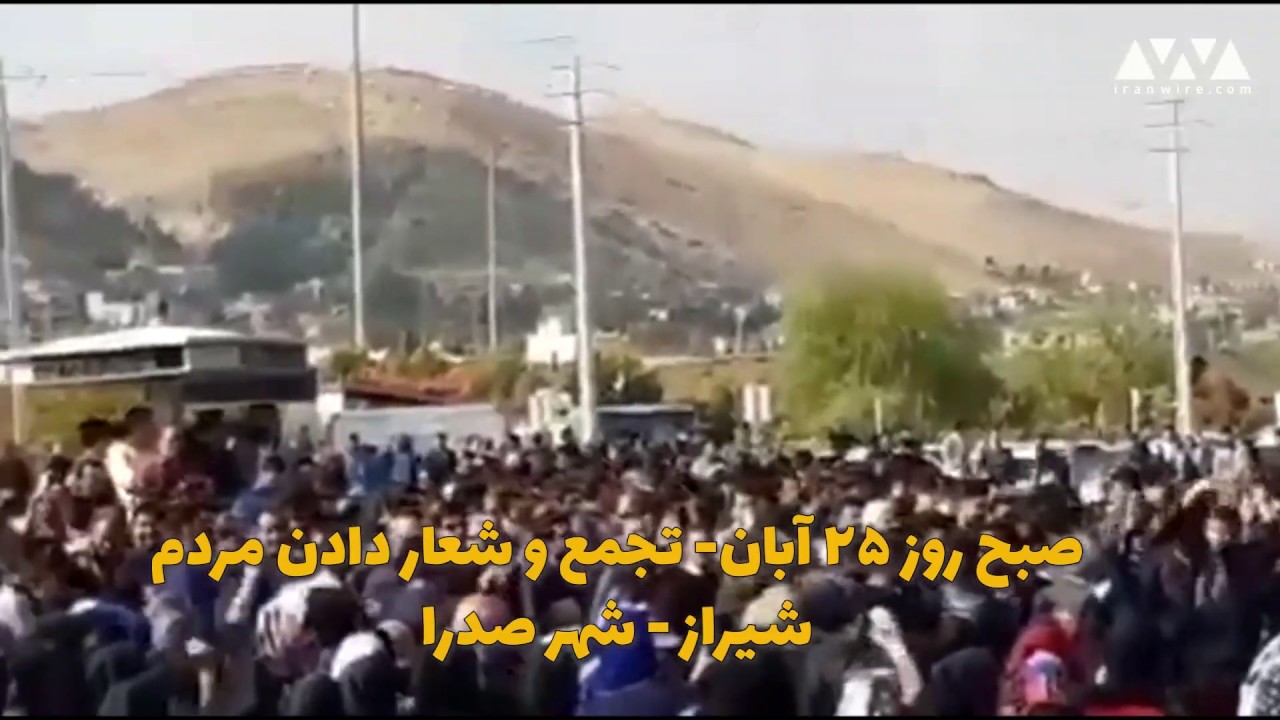
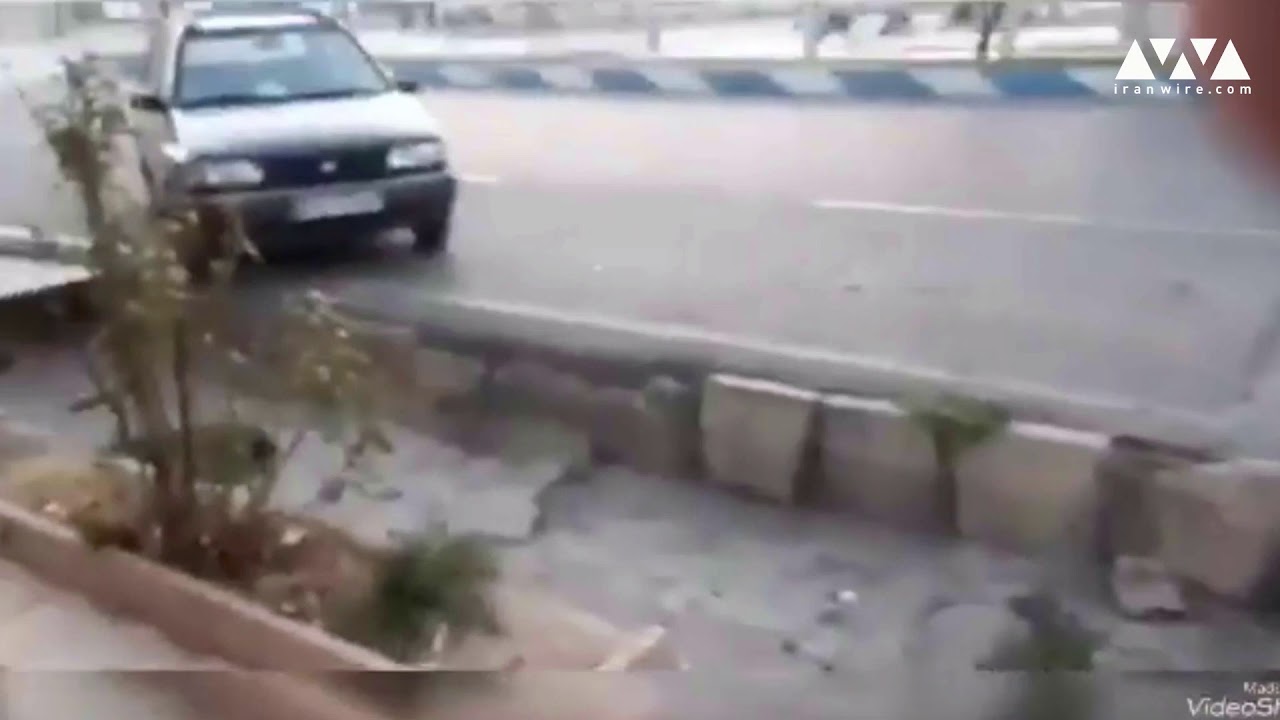
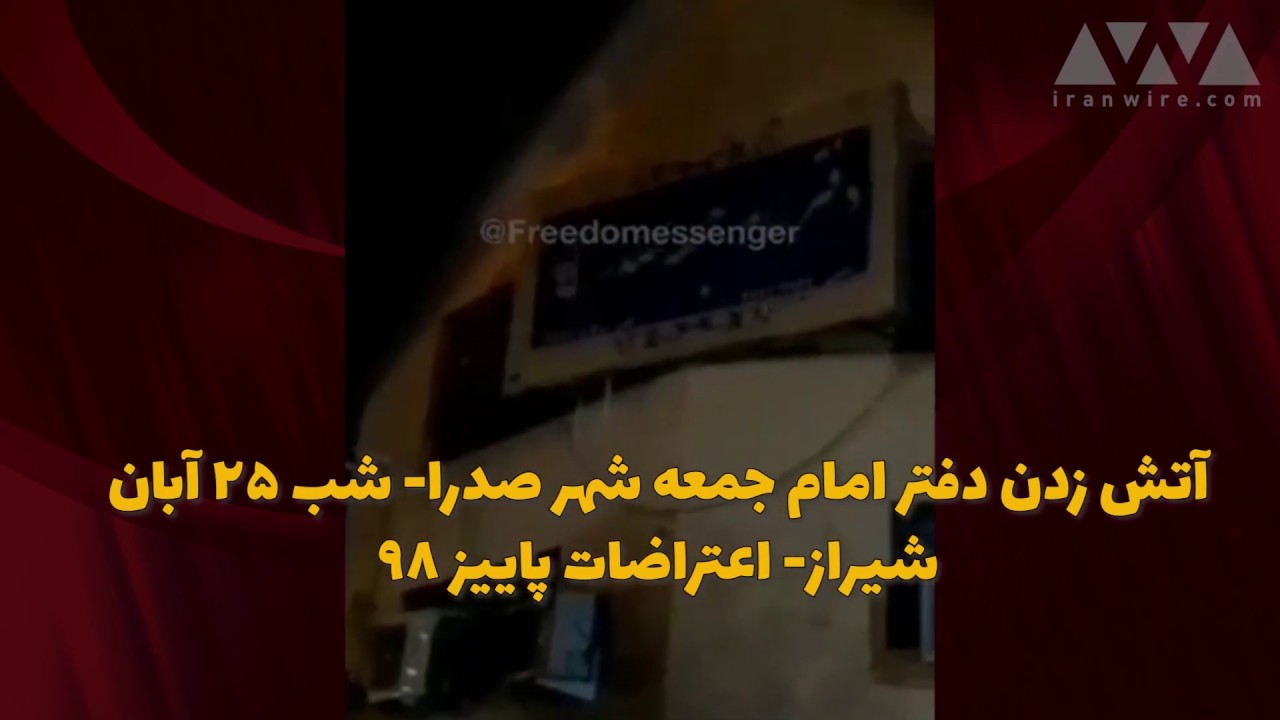
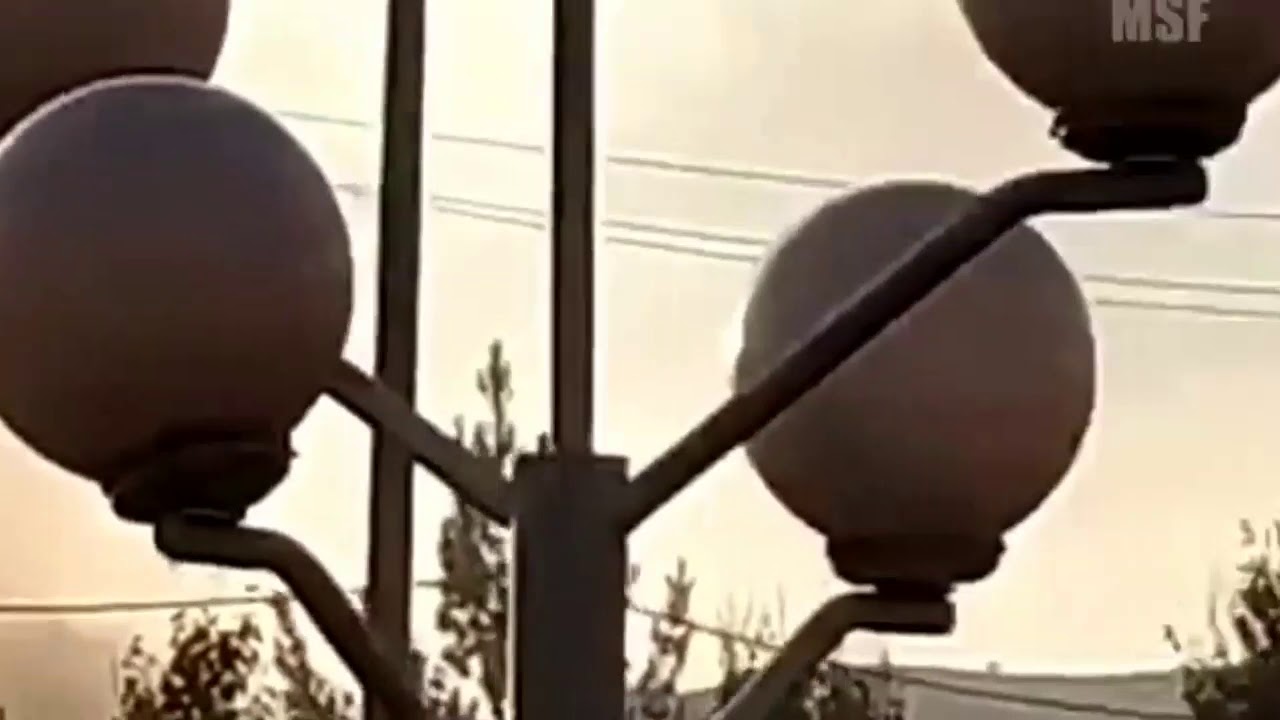
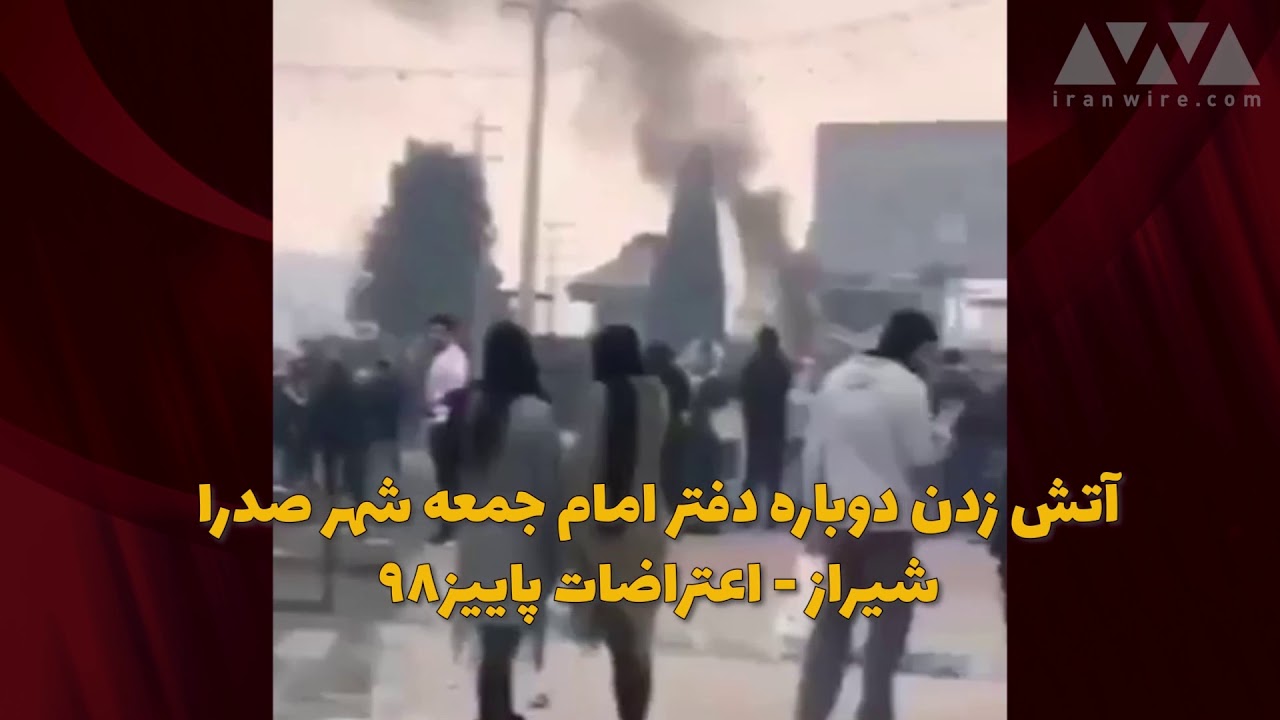



















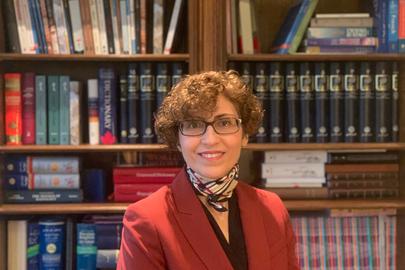
comments